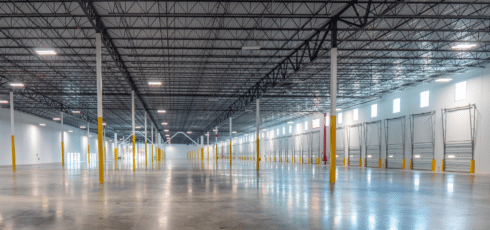The development process in Austin can be confusing as it involves many moving parts, various parties involved, and multiple stages. If you are a landowner in Austin or looking to become one, this article is a great starting point to gain an understanding of the development process in Austin.
A word to the wise: Austin has a reputation for being one of the hardest cities in the country to develop in, so it’s crucial to build a strong development team that has experience in the Austin market.
Read Next: A Complete Guide to Common Commercial Real Estate Underwriting Terms & Definitions
In this article, we walk you through each step of the development timeline to help you better understand the City’s development and entitlement process. By no means is this an end-all-be-all guide to development, but it is an estimated timeline to understand how long a full ground-up development can take, based on each step of the process:
Due Diligence
If you want to develop your property, the first step is to do some due diligence. In due diligence you:
- Determine the highest and best use (e.g. multifamily, hospitality, office, etc.): What product type will work best based on your investment goals? How much do you want to build?
- Zoning: the land use assigned by the local municipality
- Overlays: neighborhood-specific restrictions, proximity to single-family homes, capitol view corridor
- Other Environmental restrictions: Watershed, Floodplain, Conservation Areas
If this is already starting to sound complicated, don’t worry, that’s what a development team is for. The role of a developer is to know what it’s going to take to get the land ready for construction and to understand how that will impact the value of the land and the success of the project needs. To do this, a developer coordinates design, entitlements, capitalization, and finances.
Read Next: Evaluating a Property: Underwriting Commercial Real Estate Acquisitions
Rezoning (12 Months)
Cumulative Time ~12 Months
Once the sale/partnership terms have been worked out, it’s now time to prepare the land for development. If the land is already zoned for the desired project, then this step isn’t necessary and a year has been shaved off your timeline. If not, you will need to apply for a re-zone of the property.
Read Next: Zoning Districts in Austin, TX: What They Are & How They Affect Your Property
Depending on the property’s current zoning and what your desired zoning is, a rezone could take up to a year or more and will include working with the city, neighborhood, communities, etc. Twenty years ago, the site that is now Concordia University took only five months to receive the proper entitlements, now that process would take almost two years. And not all rezones are created equal, the more drastic the zoning change the harder and longer the process could be. For example, it will probably be easier to rezone a property from light industrial to commercial services than it would to rezone a single-family zoned lot to vertical mixed use.
Read Next: Concordia University Campus Relocation Spurs Growth and Reduces Costs
Potential entitlement challenges in the city of Austin can make things more challenging if your property is located in or near a FEMA floodplain, single-family compatibility area, neighborhood plan, capitol view corridor, restrictive easements, and schools.
If your property falls in a neighborhood plan, you also may need to amend the future land use map with the neighborhood to change to the desired use.
Conceptual design (90 days)
Simultaneously with or shortly after the rezone, a developer will typically engage an architect and civil engineer to start preliminary design and engineering studies for the project. The main goal of this stage is to prepare the land from a design and legal standpoint. Oftentimes, this will overlap with the rezone, but is a crucial part of the process. Get your checkbook out, because this is usually when you start to spend money on designing the building.
Permitting (12 to 15 Months)
Cumulative Time ~26 Months
Congratulations! You have achieved a formal rezone from the City of Austin and have made it through conceptual design with your development team. Now that you know what you are going to build, the team will apply for all of the necessary permits to start constructing the building. For the same reasons as the rezone, combined with the complexity of the City reviewing the designs and engineering plans of the project, this typically takes at least 12 months.
Read Next: How to Get a Building Permit for Your Office Construction in Austin, TX
While the City is reviewing the permit applications, the developer will release the architects and engineers to do the remaining building design and engineering. This is also when the developer will most likely secure funding for the construction of the building. The main goal of this stage is to get everything ready so that once the permitting gets approved by the city, the construction team is ready to break ground. If you haven’t spent at least $1.5 million for a small commercial project by the end of permitting, congratulations…or you may not be as far along in the process as you think you are.
Construction Period (Depending on product type)
Cumulative Time ~ 51 Months
At this point, the construction team constructs the building from the ground up. This includes:
- Initial site work
- Utility installation and off-site work
- Construction of the building
- Interior finish outs
Depending on the product type and size, development can take anywhere from nine to 48 months.
Industrial/single-story commercial: 9 to 15 months:
- Buda Midway Phase I: 13 Months
Mid-rise office: 18 to 24 months:
High-rise office: 36 to 48 months
Once the building has been completed and is ready for occupancy, there is another round of inspections and permits required by the City. Once the City has finished those, they will issue the building’s certificate of occupancy. This means the building is ready for move-in.
Read Next: The Ultimate Guide to Hiring a Construction Project Manager
Lease-Up (12 Months)
Cumulative Time ~ 63 Months
Commercial (office/industrial/retail)
Once the property is ready to be occupied, a broker will typically be hired to find tenants to fill the building. This is variable in time, but a good benchmark is to plan on the building being fully leased within around 12 to 24 months depending on the size of the building. During lease-up, the tenants also build out their space from a shell condition to their customized office space in what is called tenant improvements. The majority of tenant improvements are usually paid for by the landlord (you) and are getting more and more expensive with construction costs but developers like to call this “good-news money” because it means the project is about to be occupied and you will start getting paid rent!
When a building is leased before it is built it is called getting a building “pre-leased,” but if a project starts without any leases it is called “spec” as it is built on a speculative basis.
Read Next: The Ultimate Guide to Hiring a Tenant Representation Broker
Stabilization
A building is designated as stabilized when it is nearly fully occupied with enough cash flow to pay your operating expenses and debt payments, and to start earning a return on your investment through stable cash flow into the future.
Now what?
Depending on your investment goals, either sell it to an investor, refinance depending on the interest rate environment, or hold it as a cash-flowing asset.
Cumulative Time ~ 63 Months
This is variable nowadays, especially with how hot the Austin real estate market is. But, a good rule of thumb is that a building is usually sold when the cashflows are stabilized. But, it is not out of the realm of possibility for the building to be sold when construction finishes or even during construction.
During the sale of the building, all ownership/risk/cashflows will be passed on to the new owner and the partnership will receive payment for the building.
Below is a more simplified timeline of the process detailed above:

Conclusion
The development process is long with many moving parts, especially in Austin. But, that doesn’t mean it is impossible. Understanding how long it takes and what it involves is the first step to knowing what to do if you own a piece of land you may want to develop or sell.
An example of a successful AQUILA development can be found here: East 6: How AQUILA Successfully Developed, Pre-Leased, and Sold a New Office Building in East Austin
Want to learn more about developing or selling your land? Schedule a consultation with one of our commercial real estate investment experts today.














